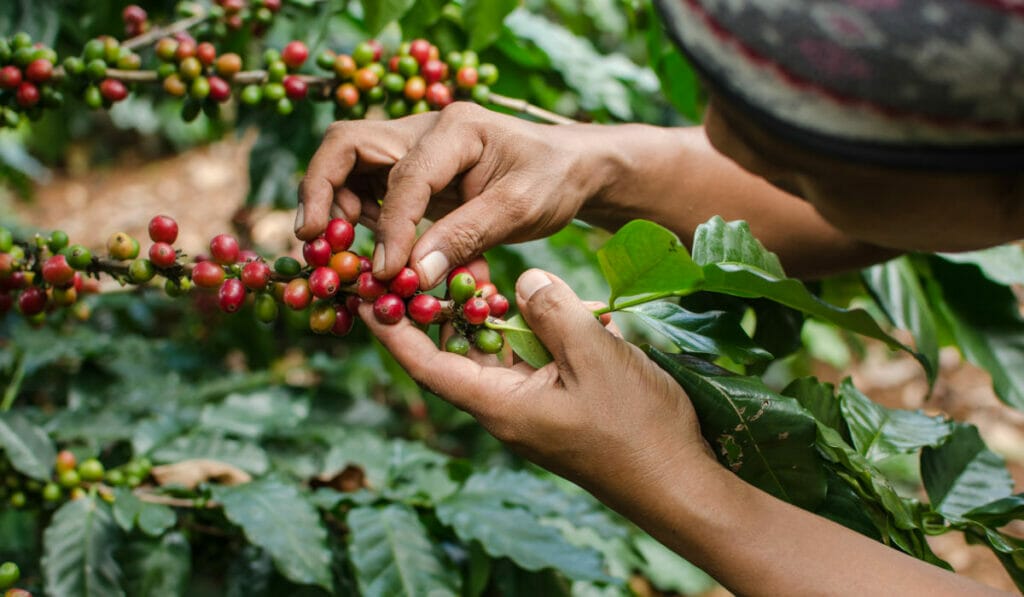
Geoffrey Dalziel, Business Executive Manager of Nespresso Malaysia.
The Peak: Tell us more about this programme.
Geoffrey Dalziel: The Nespresso AAA Sustainable Quality Programme, created in 2003 with the Rainforest Alliance, focuses on 70,000 farmers in 12 countries. For this The Choices We Make campaign, we wanted to showcase our belief that quality comes by choice, not chance. That is why we wanted to show one concrete example that is happening in Colombia around the creation of a wet mill. We believe this will help consumers understand the type of impact the programme can have and how it can change the lives of the farmers involved.
TP: How does it work?
GD: The Choices We Make is the brand new campaign from Nespresso, focusing on the amazing stories behind the coffee farmers in Colombia. The idea is not just Columbia. The Wet Mill in Jardin in north-west Colombia is just one illustration of all the choices we make in the world and, through AAA, to bring high quality coffee to our consumers.
The aim of the campaign is to tell an authentic, honest tale of partnership that has led to more than a unique cup of coffee – all because of the right choices. This campaign also aims to tell the story of the consequences the programme has on the personal lives of the farmers and in the community we live in. This impact shows the tangible effect every sustainable choice, whether big or small, has on the quality of our coffee and the farmers we work with.
TP: What have been the benefits for coffee farmers?
GD: As you’ll see from the stories, the time saved by the farmers has allowed for improvements that directly affect the community, for example, additional time with their families and to volunteer at the local fire service. For the first time in a global campaign, we’re telling the personal story of farmers. These farmers use the community mill, enabled by the Nespresso AAA Sustainable Quality Programme and the local cooperative, to process their coffee beans in a sustainable and best practice way.
TP: What are Nespresso’s criteria for premium coffee?
GD: To ensure best sustainability and quality practices are picked up by farmers, agronomists use what we call the Tool for Assessment of Sustainable Quality, or TASQ. We developed TASQ as the tool to implement AAA with farmers who have the potential coffee quality we need. It works like this: First, we hold informational workshops during which farmers can register their interest. Next, an AAA representative visits the farm and signs it up as a ‘candidate’.
Once signed on, a candidate farm has one year to formally enrol in the programme. Upon enrolment, an agronomist visits the farmer to do an initial assessment, mapping the farm and its practices. With this, the farmer gets to work on the Nespresso Core Module: a standard comprised of 39 criteria (13 on quality, 16 on sustainability and 10 on productivity). They have three years to comply with these criteria, three of which are prerequisites, or zero tolerance (child labour, forced labour and worker harassment/ abuse). Farmers who want in must demonstrate their compliance with these and willingness to address issues where they are lacking.
Once they’ve complied with all 39 criteria, they move to ‘advanced’ or ‘certified’ status. There are many more modules farmers can choose to work on afterwards but, by focusing on difficult core practices first, we’ve learned the rest becomes easier. At the end of the day, it’s about making it possible and worthwhile for farmers. Significantly, this journey of continuous improvement is travelled together with the agronomist. We give farmers much support through regular visits, trainings, field investments where appropriate and planning.
TP: How does Nespresso maintain a steady supply of premium coffee?
GD: This is why we created the Nespresso AAA Sustainable Quality Programme: we wanted to help ensure we can get the quality of the coffee we were looking for, while improving farmers’ livelihoods and increasing the uptake of sustainable practises.
TP: Nespresso has a wide range of coffees. How does it decide what to offer consumers?
GD: At Nespresso, we are in direct contact with our consumers, and we try and understand their needs and wants when it comes to coffee. For example, as we know many coffee drinkers prefer their coffee with milk, we designed our first ever coffees specifically designed to be drunk with milk: the Barista Limited Edition. We also rely on our coffee expertise and our coffee teams who are constantly looking for new flavours, new aromas to bring to our coffee-lovers all around the world.


